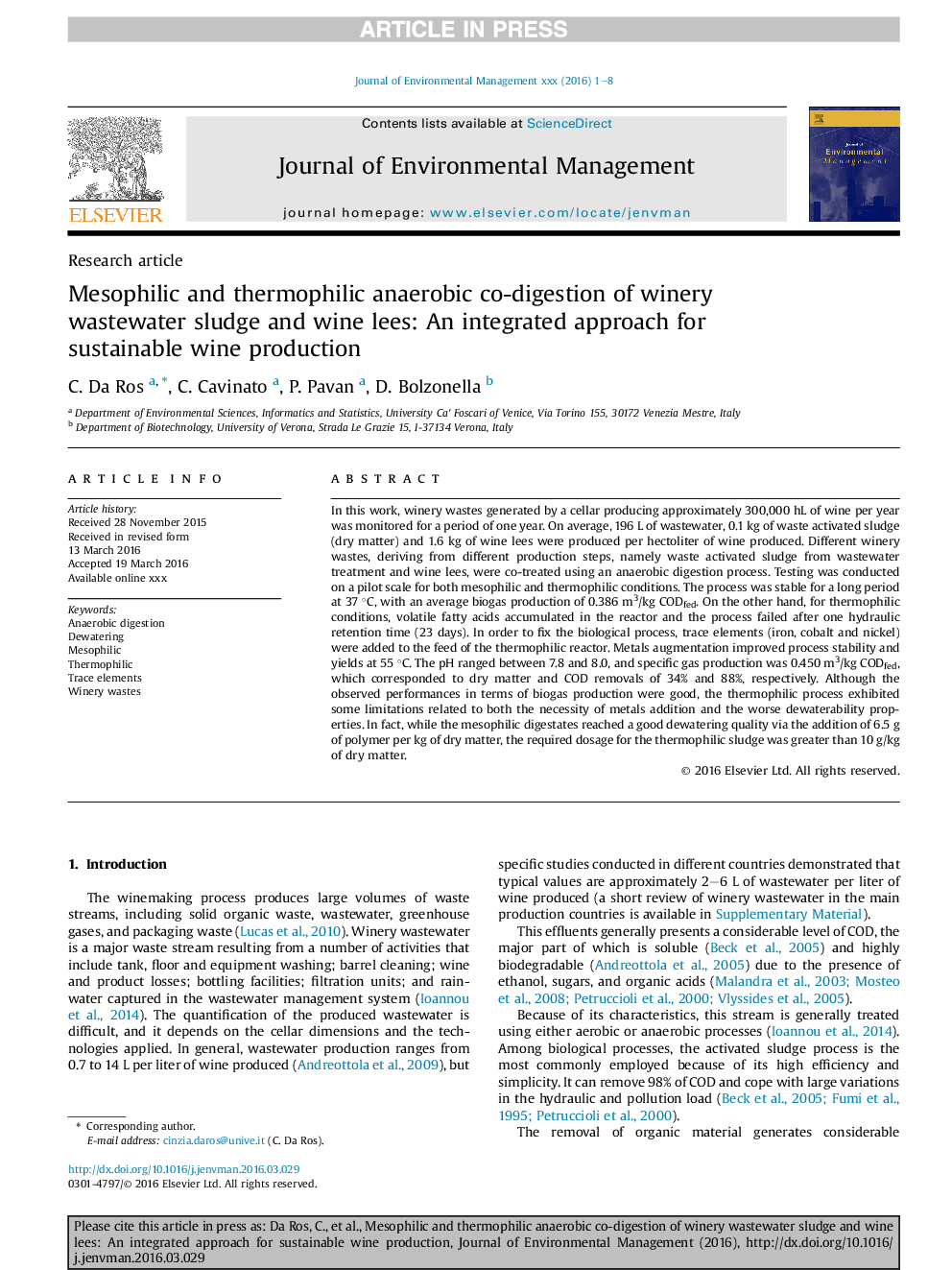| Article ID | Journal | Published Year | Pages | File Type |
|---|---|---|---|---|
| 5116433 | Journal of Environmental Management | 2017 | 8 Pages |
Abstract
In this work, winery wastes generated by a cellar producing approximately 300,000 hL of wine per year was monitored for a period of one year. On average, 196 L of wastewater, 0.1 kg of waste activated sludge (dry matter) and 1.6 kg of wine lees were produced per hectoliter of wine produced. Different winery wastes, deriving from different production steps, namely waste activated sludge from wastewater treatment and wine lees, were co-treated using an anaerobic digestion process. Testing was conducted on a pilot scale for both mesophilic and thermophilic conditions. The process was stable for a long period at 37 °C, with an average biogas production of 0.386 m3/kg CODfed. On the other hand, for thermophilic conditions, volatile fatty acids accumulated in the reactor and the process failed after one hydraulic retention time (23 days). In order to fix the biological process, trace elements (iron, cobalt and nickel) were added to the feed of the thermophilic reactor. Metals augmentation improved process stability and yields at 55 °C. The pH ranged between 7.8 and 8.0, and specific gas production was 0.450 m3/kg CODfed, which corresponded to dry matter and COD removals of 34% and 88%, respectively. Although the observed performances in terms of biogas production were good, the thermophilic process exhibited some limitations related to both the necessity of metals addition and the worse dewaterability properties. In fact, while the mesophilic digestates reached a good dewatering quality via the addition of 6.5 g of polymer per kg of dry matter, the required dosage for the thermophilic sludge was greater than 10 g/kg of dry matter.
Related Topics
Physical Sciences and Engineering
Energy
Renewable Energy, Sustainability and the Environment
Authors
C. Da Ros, C. Cavinato, P. Pavan, D. Bolzonella,
